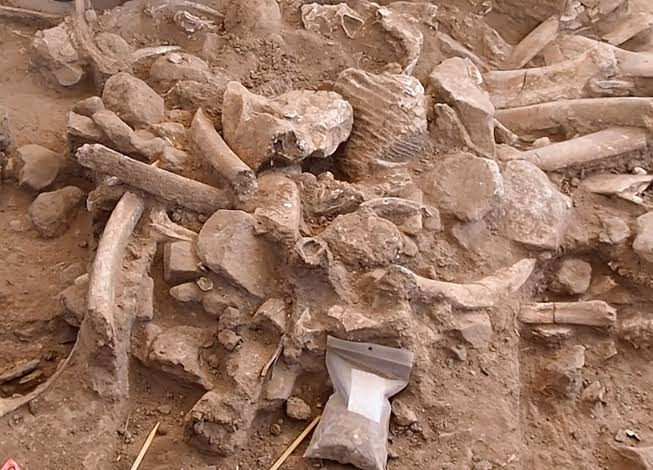She is 37,000 years old. The remains of a female mammoth reveal evidence of early humans in North America
The surprising discovery of mammoth remains in a paleontologist's backyard has led to an unexpected conclusion.
The remains of a female mammoth and her young, estimated to be 37,000 years old, show distinctive signs of slaughter.
This provides new evidence that humans may have reached North America much earlier than previously thought.
Paleontologist Timothy Roe first learned about the fossils in 2013 when a neighbor noticed something emerging from a hillside on some of Roe's properties in New Mexico.
Upon closer examination, Rowe found a tusk, a smashed giant skull, and other bones that appeared to have been broken on purpose.
Rowe thought it was a site where two mammoths were slaughtered.
Usually, Rowe, a University of Texas professor at the Jackson School of Earth Sciences and an expert in vertebrate palaeontology, does not study mammoths or early humans.
But he couldn't help but work on the research because of the location of the find.
Two six-week excavations took place at the site in 2015 and 2016, but the analysis in the lab took much longer, and is still ongoing, Rowe says.
Rowe is the lead author of a new study providing an analysis of the site and its implications.
The study was published in Frontiers in Ecology and Evolution in July.
"I still have to address the cosmic coincidence of this site popping up in my backyard," Rowe wrote in an email.
Site analysis
Several finds at the site paint a picture of what happened there thousands of years ago, including bone tools, evidence of fire, broken bones, and other signs of human slaughter of animals.
Long mammoth bones, which were turned into disposable blades, were used to smash the animals' carcasses before the flames melted their fat.
According to the study, fractures can be seen resulting from directing a sharp force to the bone.
There were no stone tools at the site, but researchers found knives made of bone with worn edges.
A chemical analysis of the sediments around the mammoth bones showed that the fire was continuous and controlled, and was not the result of a wildfire or lightning strike.
The most surprising detail about the site is its presence in New Mexico, where previous evidence suggests that humans weren't there until tens of thousands of years later.
Follow the footsteps of the first humans
Collagen from mammoth bones helped researchers determine that the animals were slaughtered at the site between 36,250 and 38,900 years ago.
This age range makes New Mexico one of the oldest sites built by ancient humans in North America, researchers said.
For years, scientists debated when the first humans arrived in North America.

“Humans have been found in the Americas for more than twice as long as archaeologists have held for many years,” Rowe said, adding that the site notes that “humans achieved global distribution much earlier than previously understood.”
The location of the place is suggested to the arrival of early humans 37,000 years ago, long ago, according to the study.
It is possible that they traveled by land, or along coastal roads.
Source: CNN
https://shahbapress.net/archives/27161?fbclid=IwAR0rK48JMnsIgGyYM6MGMJpifbXw8sbA2mGYVUGwipVZu8idZus6r-kutJA


